Written by SmartSense | Food Safety, Supply Chain
Explore solutions built for your industry
Our customer-proven solutions monitor medications and food inventories for some of the most recognizable names in the industries of healthcare, food service, and transportation, and logistics. See how our solutions adapt to your industry needs.
SEE SOLUTIONSKroger Health Strengthens Compliance Visibility with SmartSense
Watch The VideoLEARN
Questions? Call +1 (866) 806-2653 to speak to our experts.
Schedule demoQuestions? Contact us.
Call +1 (866) 806-2653 to speak with our experts or get started with a demo.
CONTACT USAbout Us
SmartSense was created to use the power of the Internet of Things (IoT) to help our customers protect the assets most critical to the success of their business.
See our storyCONNECT. PROTECT. RESULTS.
Questions? Call +1 (866) 806-2653 to speak to our experts.
Schedule demoPlease select your login
September 25, 2019
Optimizing Store Operations at Scale with SmartSense
There was once a large grocery chain with over 1,000 retail locations who wanted to improve its business. Competition was growing, labor costs were increasing, and they needed to operate more intelligently than they had previously. Leadership was frustrated with the limited visibility they had into store operations. Management was frustrated with the time employees spent on routine, non-customer facing activities. All of this is to say that they knew there was a better way.
Their business was complex, making it challenging to optimize store operations at scale. With three different store formats, dozens of makes and models of equipment, a varied mix of employee skill levels, and a broad range between their best and worst performing stores, this grocery store had an uphill battle. Their stores had a variety of businesses and products at each location. Out of their 1,000 stores, only 500 had pharmacies, and only 300 sold seafood.
This grocery store sells traditional packaged food, provides temperature sensitive medications, prepares food onsite, in addition to operating other specialized functions. Because of the broad variety of value they deliver to their customers, they need to abide by a number of regulatory mandates that cross several functions, including operations, food safety, and pharmacy safety. They know that finding a single solution to could help will these needs would provide immense value, but thought they would not find a single vendor who could help with all of these challenges.
Addressing Operational Challenges with IoT
So what exactly were they looking for?
- A consistent way to manage each location (despite location diversity – some locations didn’t have a pharmacy or prepared food section)
- An easy way to collect real time information about what is going on through their geographically distributed location
First, SmartSense solutions provide an easy way to represent its location hierarchy.
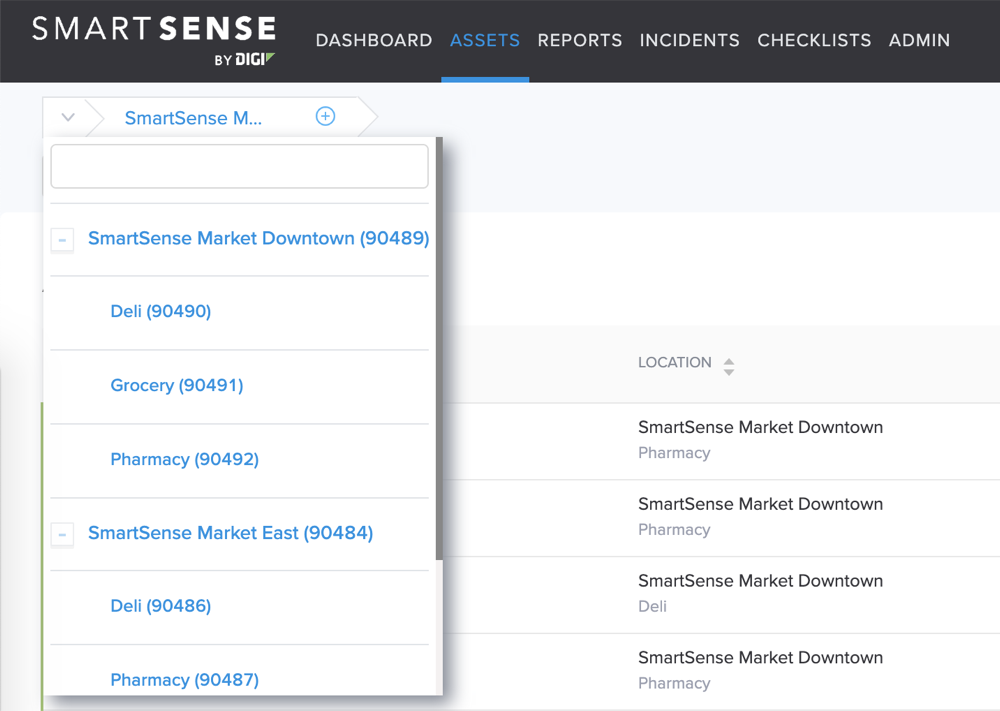
The dropdown on the left shows different locations, each with unique businesses and products (deli, grocery, and pharmacy).
Second, users can be assigned certain access in the hierarchy. For example, an individual store manager can be assigned access to “SmartSense Market Downtown.” Likewise, the deli manager for “SmartSense Market Downtown” can be assigned the deli section and nothing more.
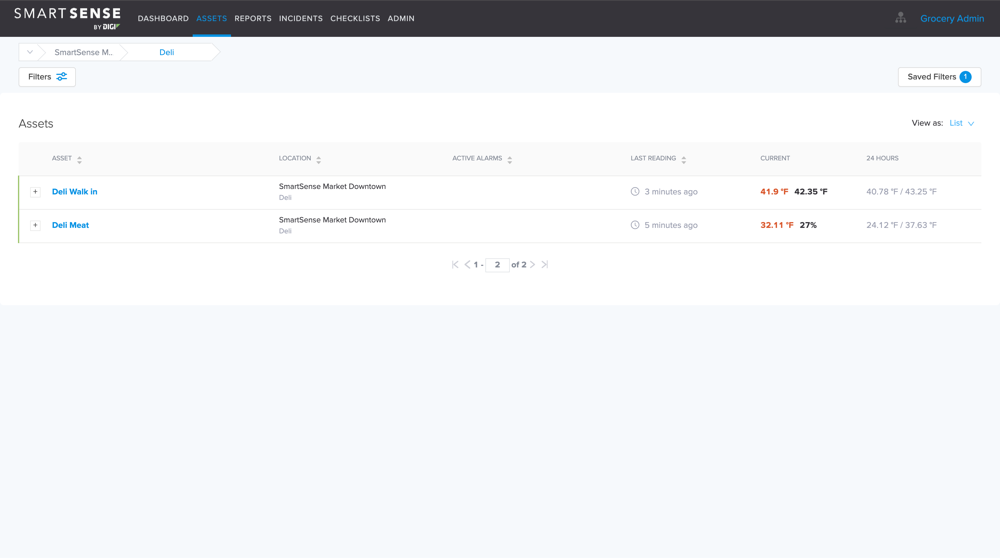
Here is an example of what the deli manager would see. When they login they would see all the deli assets which are “Deli Walk in” and “Deli Meat.”
Third, functional leaders can easily configure alerts for the assets they care about. For example, there are different pharmacy regulations in the US and Canada, so the VP of Pharmacy Compliance can set an alert for all US or Canadian pharmacies, while the deli manager can have specific alerts for their assets.
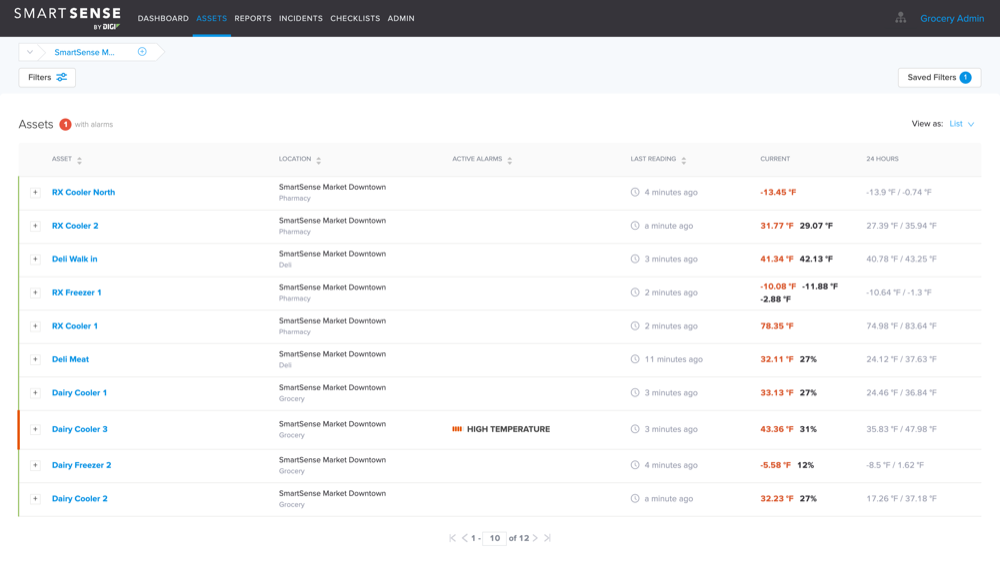
The SmartSense Assets view shows a full list of assets, including those located in the pharmacy and the deli.
These alerts go directly to the local store manager, and doesn’t have to include the contact information for the stores that do not contain the assets in this view. That information is configured for each store during setup.
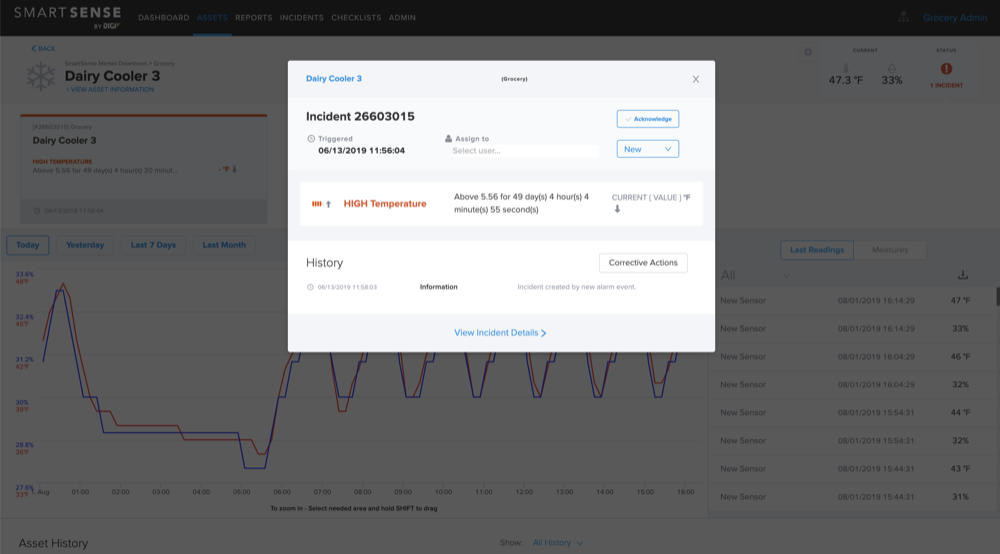
One of the RX Coolers which is impacted by a “HIGH Temperature” alert.
Next, suppose one of those thresholds for the alert was violated, a notification is sent to the store manager in addition to creating an “incident.” Incidents can be managed through a workflow with corrective actions. Management can review all incidents for a store, a region, or for the entire organization in one place.
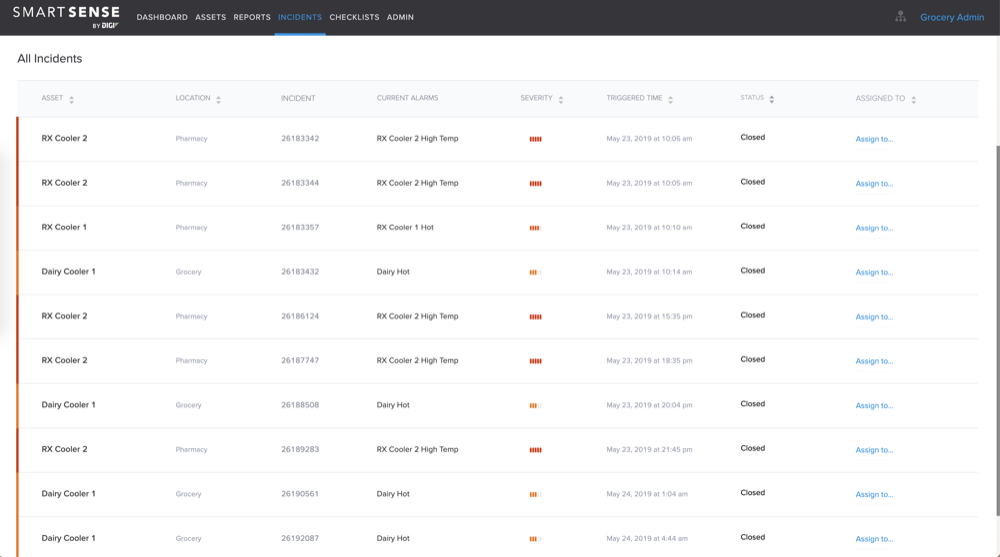
The SmartSense Incidents view shows a full list of incidents, including severity and the time that it was triggered.
Operational Challenges in the Deli
Now let’s consider another more complex operational need this grocery store has. Let’s go back to the deli. Suppose the deli has a daily requirements to check the temperatures of a number of different vegetables at 6:00 AM. At the corporate office, the Deli Operations Director can schedule a checklist specific to vegetables to repeat daily, and push it out to all locations in the hierarchy instantaneously.
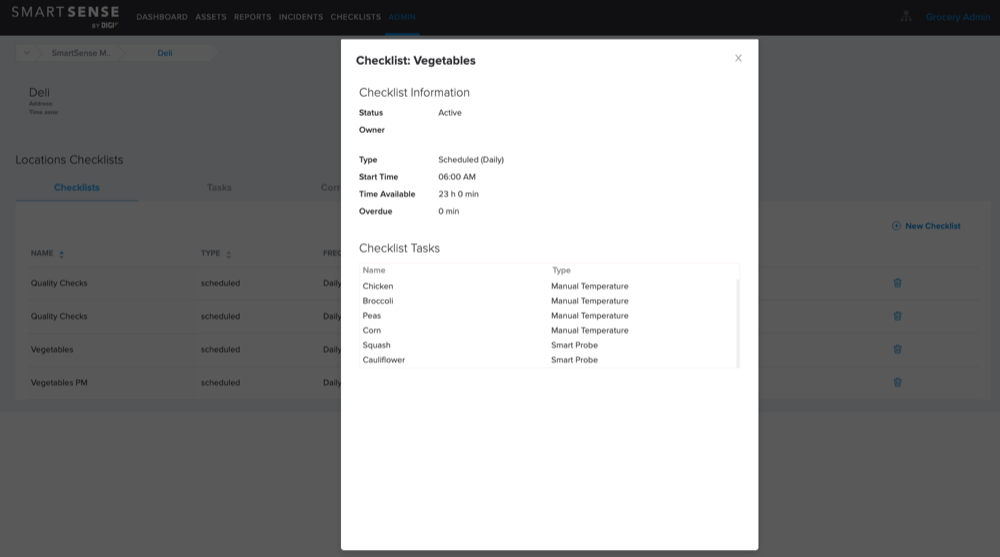
The “Checklist: Vegetables” contains a full list of the products that need temperature checks.
They can also review the progress in an organizational rollup via the Dashboard...
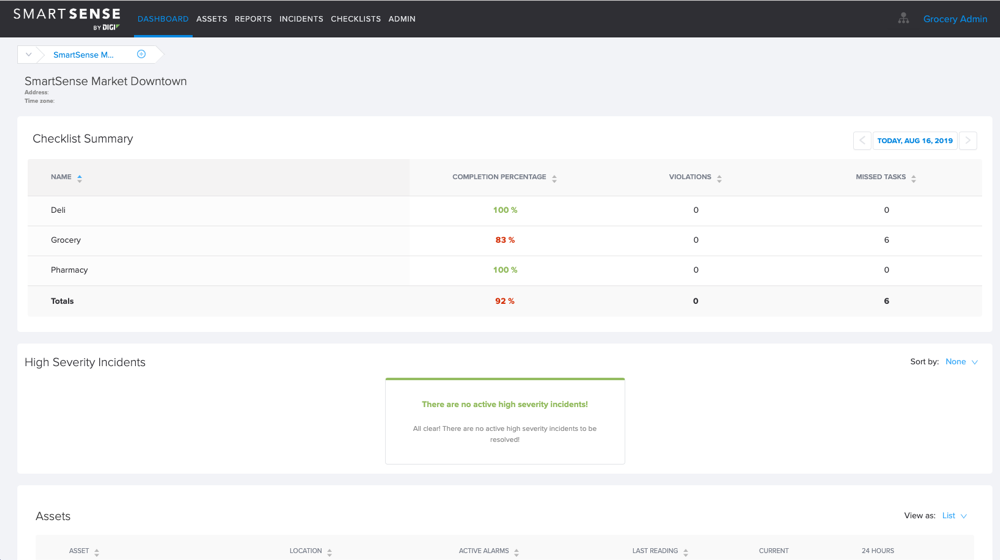
The SmartSense Dashboard shows a high-level view of Checklists, High Severity Incidents, and Assets.
With SmartSense, this grocery store has enabled a comprehensive view into their operations at large, and now have a great understanding of how each business unit is performing. They are able to focus their efforts on equipment that is underperforming, review a full list of incidents such as temperature excursions, and review task completion rates of each business unit.
Subscribe to Connected Insights!
Subscribe to our blog to get regular email updates on food safety, pharmacy safety, and supply chain insights.
Topics:
Food Safety
Supply Chain
Other Suggested Posts
Why K-12 School Cafeterias Are Automating Food Safety
During the COVID-19 pandemic, there were significant disruptions to K-12 school food services nationwide. School nutrition directors were forced to rapidly ...
Frozenomics: Why Freezers Are Becoming America's Financial Lifeline
When times get tough, Americans get creative with how they stretch budgets. That's why today's shoppers are fighting inflation and financial strain with an ...
How Machine Learning Elevates Traditional Temperature Monitoring
While a minority of food companies and healthcare organizations continue to manually collect temperature logs to meet compliance regulations, most enterprises ...
Creating a Customer-Centric Food Chain with Sensing-as-a-Service
The food service industry is undergoing an era of labor uncertainty and demand volatility. The reasons are many and complex: the rise of e-commerce, supply ...
Designing Seamless Quality Assurance Across the Cold Chain
Wholesalers and retailers in the food manufacturing and pharmaceutical industries must ensure the effective delivery of pathogen-free food and critical ...
Subscribe to the SmartSense Blog
Stay up-to-date on the evolution of IoT connectivity.
CONNECT. PROTECT. RESULTS.
Learn how our complete critical
environment monitoring solution will help you
connect and transform your business.
Call +1 (866) 806-2653 to speak with our industry
experts or get started by
requesting a demo.
